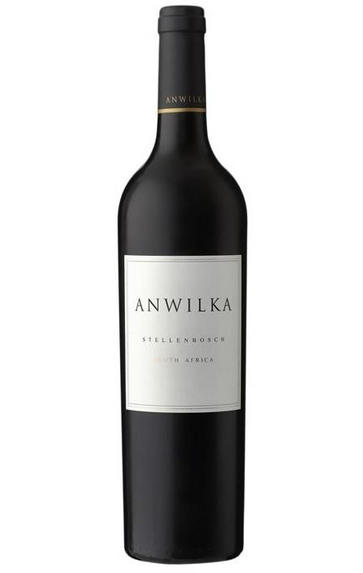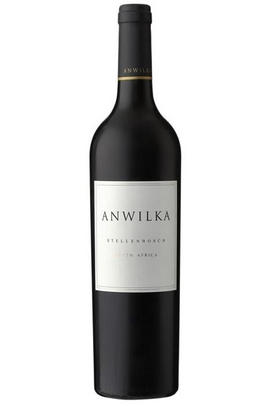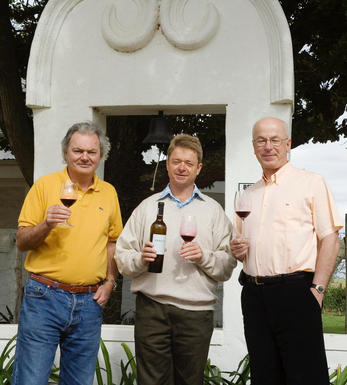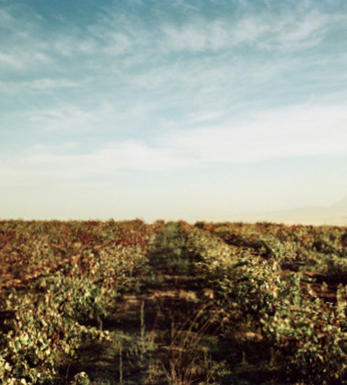
2009 Anwilka, Stellenbosch, South Africa

Critics reviews
Drink 2021 to 2036
Jane Anson, Inside Bordeaux (November 2021)
Neal Martin eRobertParker.com Dec 2012
About this WINE

Anwilka
Anwilka Vineyard started as a joint venture between Bordeaux’s Bruno Prats, former owner of Ch. Cos d'Estournel, Hubert de Boüard de Laforest, co-proprietor of Ch. Angélus in Bordeaux, and Lowell Jooste of South Africa’s Klein Constantia Estate.
Located in the prime red wine region of Helderberg in Stellenbosch, the vineyard was purchased in 1997, and production of Anwilka wines commenced in 2005.
In May 2012, Anwilka Vineyards merged with Klein Constantia Estate, having been purchased the previous year by Zdenek Bakala and Charles Harman. The vineyards are run by manager Piet Neethling and the wine, a blend of Cabernet Sauvignon and Shiraz with the addition of Merlot in some vintages, is made by the very personable South African oenologist Jean du Plessis under the guidance of Prats and de Boüard.
The philosophy of the owners is simply to spare no cost when it comes to wine quality. Resources are not squandered on lavish gateways and buildings, and the winery feels more like a modern farm outbuilding. The wine is exceptional, with the influence of its Bordeaux mentors clear for all to see.

Stellenbosch
Stellenbosch is South Africa’s best-known wine region, producing a wide variety of wines from leading estates, even though it accounts for less than 20 per cent of the country’s total production. Designated wards within the wine region are Jonkershoek Valley, Simonsberg-Stellenbosch, Bottelary, Devon Valley and Papegaaiberg.
At 17,500 hectares, Stellenbosch remains the Cape's most famous and important fine wine district, thanks to its proximity to Cape Town, to the cooling influences of False Bay, its mountainous (ie Helderberg, Simonsberg), granitic topography and its centres of learning such as Elsenburg Agricultural College.
It's notable for the refinement of its Cabernet Sauvignon and Chardonnay, especially from the likes of Glenelly Estate, Keermont Vineyards Oldenburg Vineyards, Raats Family and Anwilka

Cabernet Sauvignon Blend
Cabernet Sauvignon lends itself particularly well in blends with Merlot. This is actually the archetypal Bordeaux blend, though in different proportions in the sub-regions and sometimes topped up with Cabernet Franc, Malbec, and Petit Verdot.
In the Médoc and Graves the percentage of Cabernet Sauvignon in the blend can range from 95% (Mouton-Rothschild) to as low as 40%. It is particularly suited to the dry, warm, free- draining, gravel-rich soils and is responsible for the redolent cassis characteristics as well as the depth of colour, tannic structure and pronounced acidity of Médoc wines. However 100% Cabernet Sauvignon wines can be slightly hollow-tasting in the middle palate and Merlot with its generous, fleshy fruit flavours acts as a perfect foil by filling in this cavity.
In St-Emilion and Pomerol, the blends are Merlot dominated as Cabernet Sauvignon can struggle to ripen there - when it is included, it adds structure and body to the wine. Sassicaia is the most famous Bordeaux blend in Italy and has spawned many imitations, whereby the blend is now firmly established in the New World and particularly in California and Australia.


Buying options
Add to wishlist
Description
A heady blend of Syrah, Cabernet Sauvignon and Merlot. The wine is rich and layered, with oak-derived spice and violets give way to red cherry and damson fruit. It is brooding in style, with much more to come over the next five or so years I suspect. Succulent and supple, with fine acidity, excellent persistence on the finish.
Martyn Rolph, Fine Wine Account Manager
wine at a glance
Delivery and quality guarantee